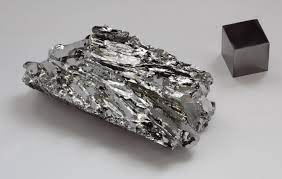Molybdenum
Molybdenum (Mo) is a chemical element in the periodic table with atomic number 42, discovered by Carl Wilhelm Scheele in 1778. Its name is derived from the Greek word Molybdos which means lead. It is a silvery-white, hard transition metal and has one of the highest melting points of all pure elements.
Most molybdenum is used to make alloys. It is used in steel alloys to increase strength, hardness, electrical conductivity and resistance to corrosion and wear. These 'moly steel' alloys are used in parts of engines. Other alloys are used in heating elements, drills and saw blades.

